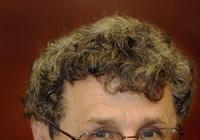Eminent physicist wins international award
Good science is unpredictable, says Scientia Professor Victor Flambaum, who has been honoured with a prestigious Humboldt Award for his lifetime achievements in research.
Good science is unpredictable, says Scientia Professor Victor Flambaum, who has been honoured with a prestigious Humboldt Award for his lifetime achievements in research.

Scientia Professor Victor Flambaum, of the UNSW School of Physics, has received a prestigious Humboldt Research Award in recognition of lifetime achievements in research.
The award honours academics who have made an outstanding contribution through fundamental discoveries, new theories, or insights that have a significant impact on their field of endeavour.
Professor Flambaum has the distinction of having published scientific papers in many branches of physics, including atomic physics, nuclear physics, elementary particles, solid state physics and astrophysics.
He said the current trend in science was for narrow specialisation, but his more traditional, wide-ranging approach allows him to collaborate with many different people: “I have very broad research interests.”
Professor Flambaum, who is head of Theoretical Physics at UNSW, will use the EUR 60,000 prize to travel to Germany and continue research with colleagues there.
He is a member of a team led by UNSW’s Professor John Webb that won the 2012 Eureka Award for Scientific Research for the extraordinary discovery that the one of the four fundamental forces in the universe – electromagnetism - may not be constant throughout space and time.
Their study of 300 distant galaxies found the strength of electromagnetism appeared to change gradually from one side of the universe to the other.
“Good science is unpredictable,” Professor Flambaum said.
This astronomical research was based on a breakthrough by Professors Flambaum and Webb more than a decade ago, which allowed them to improve the precision for measuring physical laws elsewhere in the universe by a factor of 10.
This method, the Many Multiplet method, is now widely used by researchers around the world.
Professor Flambaum has also proposed a variety of new, extremely accurate time-keeping systems.
One such nuclear clock, based on the orbiting of a neutron around an atomic nucleus, could have such unprecedented accuracy that it neither gains nor loses 1/20th of a second in 14 billion years – the age of the Universe.
He is also co-author a popular science book presented as a science fiction story, written with his son, Andrew Flambaum.
How to make a Big Bang, a cosmic journey, tells the stories of a girl from Earth sent on a good will mission to an alien world, and a group of school students who live in a 10-dimensional world.